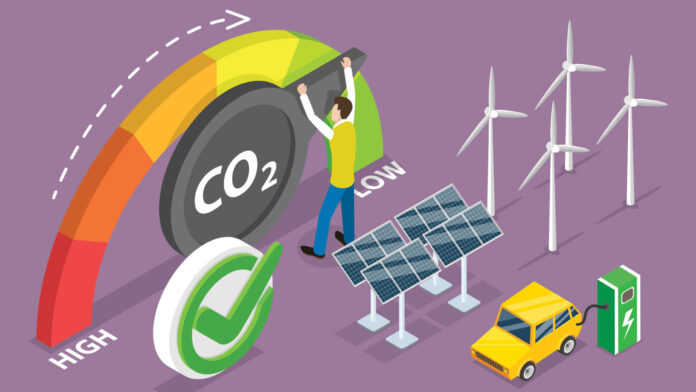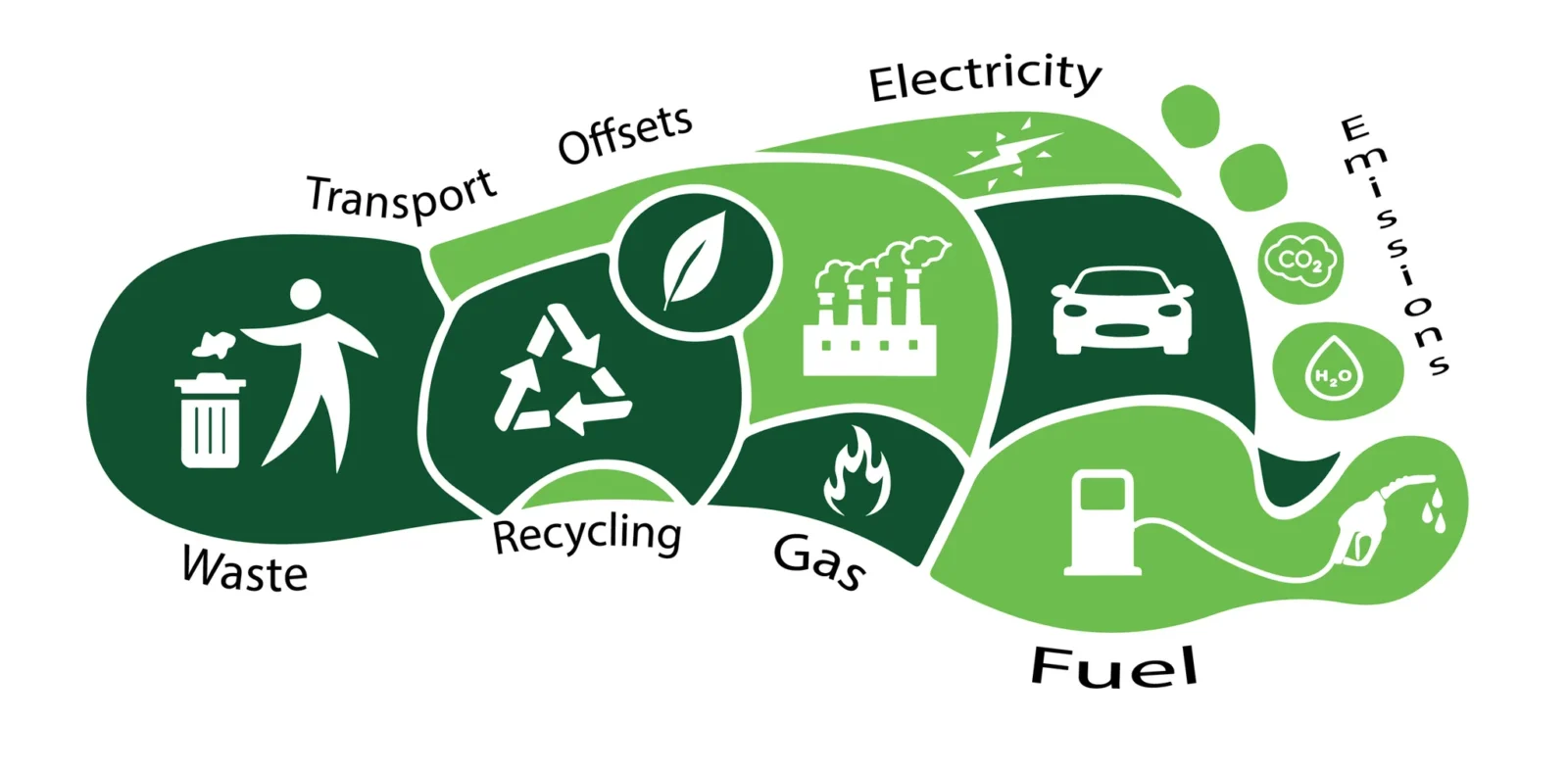
With greenhouse gas emissions mounting, climate catastrophe looms ever closer. And while that’s a scary reality to contend with, all hope is not lost. There’s still time for humanity to see the error of its ways and course-correct. You can do your part in helping the whole by reducing your household’s carbon footprint.
Using the language of a carbon footprint is another way of talking about total greenhouse gas emissions. It conveys the impact of human action on the environment. Despite the name, carbon footprint refers to emissions of carbon dioxide and other greenhouse gasses — like methane and nitrous oxide — generated by human activity. When released into the atmosphere, these gasses trap heat and contribute to global warming.
There are a number of ways you can reduce your carbon footprint, from swapping out your light bulbs to changing your power supply. There’s no one right way to do things and plenty of options to consider. Read on to learn about four ways you can reduce your household’s carbon footprint and do your bit for the environment.
1. Make the Change to Solar

One of the most impactful changes you can make to your carbon footprint comes in your choice of energy source. Burning fossil fuels releases an incredible amount of carbon into the atmosphere. So reducing your reliance on them is a big first step to lowering the size of your footprint.
There are many viable alternative, renewable energy resources to draw on. Wind, water, and geothermal power, while amazing in their own right, aren’t easily accessible to the typical homeowner. Solar, however, is.
When an average U.S. household goes solar, it prevents an additional 12,500 pounds of carbon dioxide being released to the atmosphere. That’s based on the EPA’s Greenhouse Gas Equivalencies Calculator, which compares this amount to driving approximately 18,000 fewer miles. Not only that, but most homeowners will actually save money over time, since they’ll rely less on electricity purchased from the grid. According to PosiGen.com, the average homeowner stands to save as much as $1,500 annually with a solar installation. Switching to solar is a win-win for both you and the environment.
2. Light Up With LEDs
Cutting back on your carbon footprint isn’t only about choosing where you get your power from. It’s about putting that power to efficient use whenever possible. If you’re reading this, there’s a good chance you use electricity for lighting nearly every day — and especially night — of your life. However, traditional incandescent bulbs are almost criminally inefficient.
Only a measly 2% of the energy emitted by an incandescent bulb is visible light. This means that most of the energy you’re using, and paying for, is just wasted heat. So unless you’re trying to warm your apartment with a lamp, make the switch to LEDs. The fact that incandescent bulbs will no longer be sold in the U.S. after July 2025 makes this change even more of a no-brainer.
Not only are LEDs more energy efficient, but they also tend to be brighter and longer lasting. A standard 8 to 12-watt LED bulb emits about 800 to 1200 lumens, roughly equivalent to the brightness of a 60-watt incandescent. An LED bulb also lasts about 25,000 hours, whereas their old-timey equivalents last a mere 1,000. Some LEDs are dimmable and can even change color, so you can adjust them exactly to your desire. Switching from incandescent bulbs to LEDs is a simple and affordable change you can make today.
3. Optimize Your Windows

The windows on your house provide a number of invaluable benefits. They allow light in, let you see out, and can add an overall positive feng shui to a space. However, when it comes to your carbon footprint, your windows may actually be causing harm.
You see, regular glass windows are not well-insulated. This means a lot of heat passes through them, making your home colder in the winter or hotter in the summer. It takes a lot of energy to recoup that loss — whether it be through lowering the AC or cranking up the furnace. Either way, you’re adding to your carbon footprint.
Thankfully, you can buy insulated windows that address this issue directly. Insulated windows ensure only minimal heat loss occurs at any given moment. Some windows accomplish this insulation by being constructed of double, triple, or quadruple-paned glass. They may also contain pockets of gas, like argon, between panes for added insulation. Changing to insulated windows is a great way to bring your footprint down a size or two.
4. Eat Locally and Seasonally
What you eat and when also contributes to your carbon footprint. It takes a massive amount of energy for the food industry to produce what ends up on your plate. From fields to feed, slaughter to shipping, meat is especially taxing on the environment. However, any food that needs to be transported over long distances is worth more than its weight in gas emissions. While incredible and delicious, the interconnected global food chain is taking a toll on the environment.
Transportation is one of the biggest factors in the food industry’s emissions. So you can cut down on your contributions to that aspect by buying food that was grown or raised locally. Because they’re transported shorter distances, locally produced foods have a smaller carbon footprint. The same logic applies to only purchasing foods that are in season. Strawberries may be delicious year-round, but in most parts of the Northern Hemisphere, they certainly aren’t local in winter.
Finally, don’t buy more food than you really need. If every bit of food takes carbon emissions to produce, then throwing away food is a waste in the truest sense. Reduce your tendency to impulse buy and hit the store only when you’ve got an itemized grocery list. That way you can make your purchases methodically and reduce your contributions to global waste.

Make Sustainable Changes
There’s no one right way to reduce your carbon footprint. For some, it may mean changing their eating habits and installing better-insulated windows. For others, it may mean biking to work instead of driving. Think about the areas of your life where you tend to over-rely on convenience. There’s likely a more sustainable option there for you to explore to cut down on your carbon footprint.
Although climate catastrophe is looming on the horizon, making these small changes does make a difference. The more people make such changes, the greater the sum of those changes will be. You can do your part to help the environment by using some of the ideas listed here to reduce your household’s carbon footprint.
















